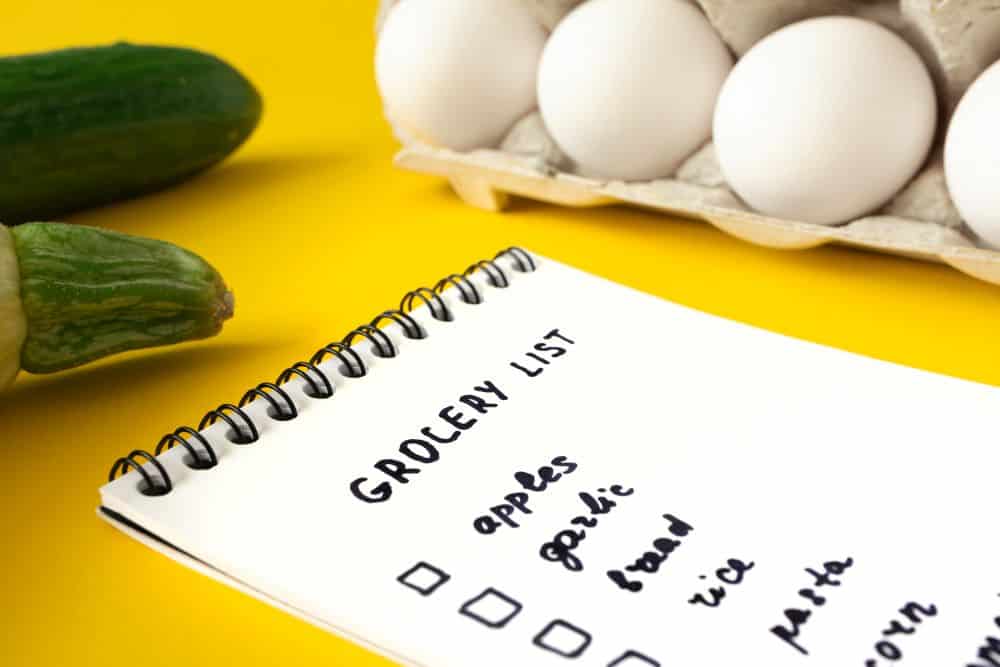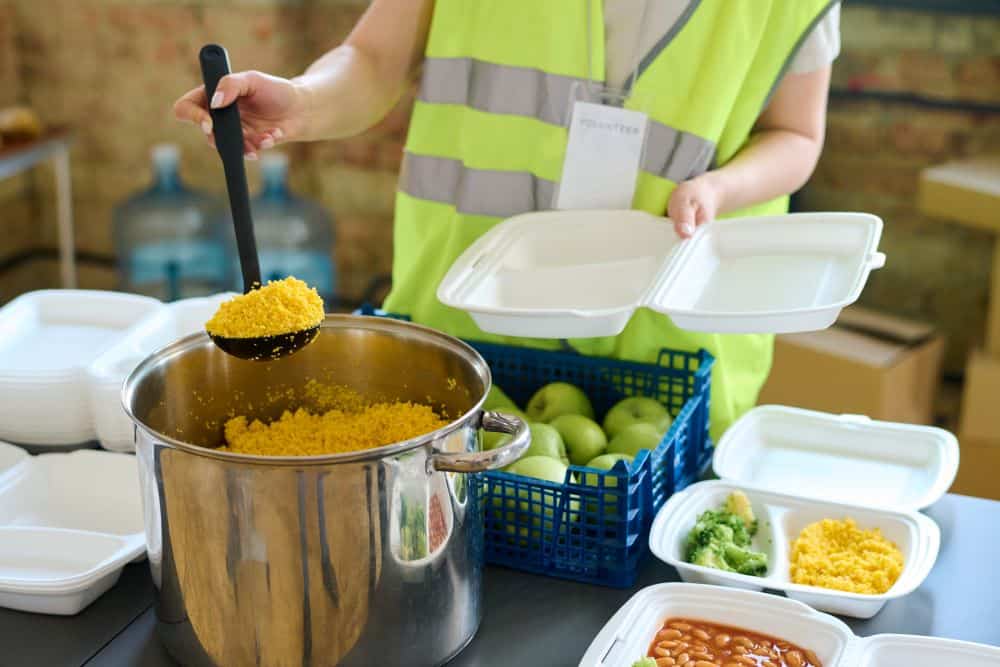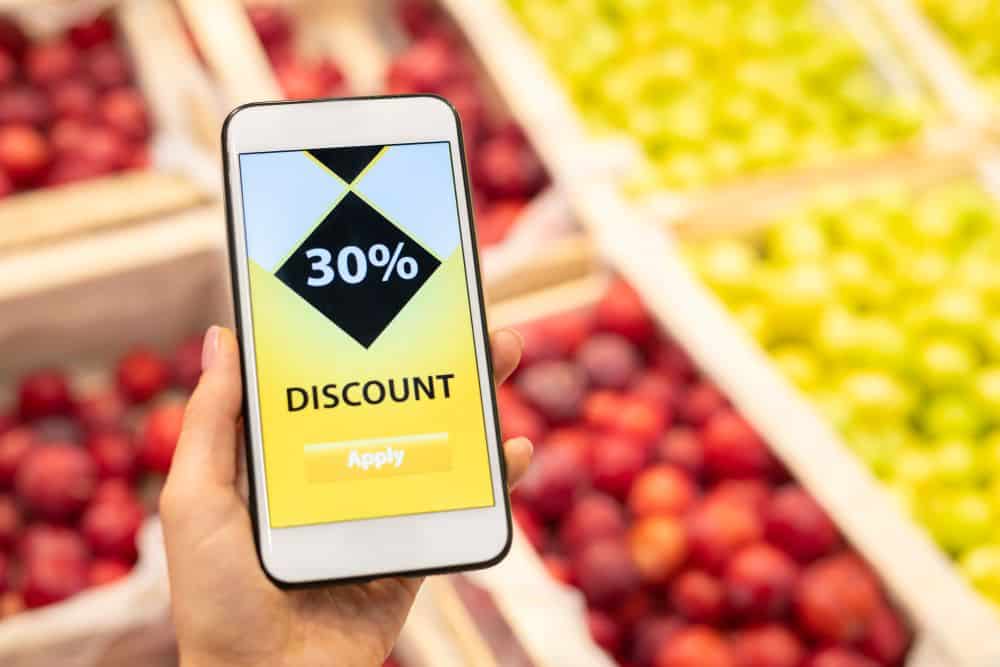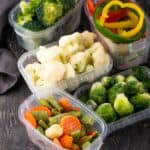In a world where the cost of living continues to rise, finding ways to pinch pennies without sacrificing the quality of life becomes not just an art, but a necessary skill. As someone who’s navigated through the challenges of managing a tight grocery budget in the United States, I’ve discovered that small, smart choices in the kitchen and at the grocery store can make a significant difference.
Currently, the savvy shopper knows that mastering a few key hacks can transform their grocery shopping from a financial burden to a manageable—and even enjoyable—task.

Adopting strategic methods for creating shopping lists and employing savvy buying techniques aren’t just ideas, they’re practical steps that have successfully allowed me to spend less each month. Moreover, optimizing food storage and usage can extend the life of groceries procured, maximizing every dollar spent.
And it doesn’t stop at simple penny-pinching; embracing the modern marvels of technology and shopping programs further refines the way we buy and consume, bringing both convenience and cost-efficiency to our fingertips. This approach to grocery shopping and kitchen management enables anyone to save money without compromising on culinary pleasure or nourishment.
Strategic Shopping List Creation

In order to maximize savings on groceries, I ensure my shopping is guided by a well-thought-out list, born from a detailed meal plan. This strategy makes sure that every item bought serves a purpose for my meal prep, and nothing goes to waste.
Embracing Meal Planning
The cornerstone of my grocery savings is a robust meal plan. I start by surveying my pantry to determine what I already have and base my meals around these ingredients to minimize purchasing duplicates.
For instance, if my pantry reveals a surplus of spices and sauces, that becomes the thematic backbone for the week’s dishes. Next, I check local grocery ads for discounts on veggies and proteins, incorporating these deals into my plan. Where possible, I’ll buy bulk items that can be used in multiple meals, stretching my dollar further.
| Day | Main Ingredient | Meal Idea | Required Groceries |
|---|---|---|---|
| Monday | Chicken | Stir-fry | – Bell peppers |
| – Snap peas | |||
| Tuesday | Lentils | Lentil soup | – Carrots |
| – Diced tomatoes | |||
| Wednesday | Ground beef | Tacos | – Tortillas |
| – Shredded cheese |
By planning my meals before stepping foot in the grocery store, I buy only what’s necessary, avoid impulse buys, and utilize each ingredient for multiple meals.
Mastering the Art of the Grocery List

Once my meal plan is set, I translate it into a shopping list organized by grocery store sections. I prioritize fresh produce and proteins that can be used soon after shopping, and stock up on non-perishables when they’re on sale.
In addition, I make the most of coupons and grocery rebates. I’ve signed up for my grocer’s loyalty program which provides me with points based on my purchases that can convert to discounts on future shops.
My list is typically structured as follows, mirroring the layout of my regular grocery store for efficiency:
- Produce: List fresh fruits and vegetables needed
- Meat & Dairy: Include essential proteins and dairy items
- Pantry: Identify spices, grains, and other shelf-stable items
- Frozen: Pinpoint any frozen goods that fit the meal plan
- Miscellaneous: Any additional items like cleaning supplies
This organization ensures that no time is wasted backtracking through aisles, and I can keep a sharp eye out for in-store specials to optimize savings even further.
Savvy Buying Techniques
Leveraging strategic buying methods can lead to significant savings on my grocery bills. I focus on when, where, and how much I purchase to reduce costs without compromising on quality.
Bulk Purchasing Wisdom
When I buy in bulk, I’m not just buying more, I’m investing in future savings. It’s important that I only buy items like pasta, rice, and canned goods which I’m certain I’ll use before they expire. Costco and Sam’s Club offer these items at wholesale prices, which often beats regular grocery store pricing. I also ensure that I have adequate freezer space for perishable items like bread and meat, so they don’t go to waste.
Seasonal Produce Selection
I always seek out produce in season because it’s fresher, tastier, and generally cheaper. For example, buying tomatoes during the summer and apples in the fall can cut down on costs significantly. I utilize a simple table to keep track of the produce that’s in season:
| Season | Produce |
|---|---|
| Spring | Spinach |
| Summer | Peaches |
| Fall | Apples |
| Winter | Oranges |
Sticking to this seasonal approach can make a huge difference in my grocery spending.
Exploring Discount Venues
I don’t limit myself to traditional grocery stores. Exploring discount venues like outlet grocery stores or local co-ops, where members can get discounts on products, are a part of my strategy. I also look out for discount days at my local stores or use digital coupons to lower expenses. Additionally, visiting a wholesale retailer for non-perishable and bulk items has repeatedly reduced my grocery bills.
Optimizing Food Storage and Usage

Being strategic with how I store and use food items can lead to significant savings. My goal is to extend the shelf-life of ingredients, maximize the use of my freezer and pantry, and reduce the amount I have to throw out due to spoilage.
Effective Freezer Utilization
Utilizing the freezer effectively allows me to preserve the freshness of foods like vegetables, meats, and even sauces. I often batch cook meals and freeze portions for later use. This not only saves time but also ensures that I’m never out of options when I’m tired and tempted to order takeout.
My freezer is perfect for storing slow cooker creations, lentils, might-have-been-wasted vegetables, or a surprising amount of peanut butter. To keep everything organized and ensure nothing is forgotten, I label containers with both the content and the expiration date.
Preventing Food Waste

I always keep an eye on the expiration dates of products in my pantry. When it comes to items like beans or rotisserie chicken, I’m creative in repurposing them. For instance, the leftover chicken can be transformed into a hearty chicken stock or used in salads, sandwiches, and soups throughout the week.
I make a habit of assessing my fridge weekly to identify any foods that need to be used soon, turning them into stews or stir-fries. With vegetables on the brink, rather than discarding them, I incorporate them into omelets or blend them into sauces. This approach ensures I use as much of my purchased food as possible, effectively reducing food waste and saving money.
Leveraging Technology and Programs
I’ve found that the most effective strategies involve leveraging technology and programs designed to reward shoppers. These digital tools are indispensable for anyone looking to be budget-friendly with their grocery purchases.
Digital Coupons and Rebates
I always keep an eye out for digital coupons that can be clipped from grocery store websites or apps such as Ibotta. These coupons are directly linked to my store loyalty card, allowing for seamless discounts at checkout. They not only save me money on products I already buy but sometimes introduce me to new items at a reduced cost.
For additional savings, I monitor for grocery rebates. Unlike instant coupons, these rebates return money after the purchase. Some require a quick picture of the receipt, while others work similarly to digital coupons. Taking advantage of the Grocery Rebate Program when eligible can add substantial savings to my budget.
Loyalty and Rewards Programs

Signing up for loyalty programs at my frequented grocery stores has been a no-brainer. These programs offer exclusive discounts and accumulate points that can, in turn, be used for future purchases. For instance, every dollar spent at the grocery store earns me points that can eventually reduce the cost of my groceries.
In addition, I often shop online through portals that offer cashback or additional points for purchases made. This not only saves me time but boosts my overall savings. It’s important to ensure my payment methods are linked to these programs to automatically collect rewards with each transaction.
Home Cooking and Preparation
In my kitchen, I employ strategies to maximize efficiency and minimize grocery bills. By focusing on meal prep and cooking at home, I ensure my meals are both budget-friendly and nutritious.
Advanced Meal Preparation
I spend a part of my weekend planning and preparing meals ahead. By batch cooking staples like grains, veggies, and beans, I not only save time but also enliven my meals throughout the week with variety and nutritional value. I often use a slow cooker for preparing large quantities, and I store portions in the fridge or freezer. This means I can quickly assemble a meal with components like quinoa, roasted vegetables, and chickpeas, which are staples in my budget-friendly and, at times, vegan diet.
- Sunday Batch Cooking:
- Grains: Quinoa, brown rice, and barley.
- Proteins: Beans, lentils, and occasionally chicken.
- Vegetables: A colorful mix, roasted or steamed.
Cooking Economically at Home

I cook at home regularly, which allows me to control the ingredients and also the cost. Utilizing spices and fresh herbs, I can transform affordable ingredients into flavorful dishes. Instead of buying fresh herbs every week, I grow them on my windowsill, which saves money.
As for coffee, brewing my own at home has significantly cut down my expenses compared to visiting coffee shops. I have also found that incorporating more plant-based meals, like those with beans and lentils, is not only good for my health but also gentle on my wallet.
- My Weekly Economic Cooking Tips:
- Fresh Herbs: Grow basil, cilantro, and parsley at home.
- Home Coffee: Invest in a good coffee maker and buy beans in bulk.
- Spices: Bulk purchase basics like black pepper, cumin, and garlic powder.
Frequently Asked Questions

In this section, I provide answers to common questions about saving money in the kitchen and during grocery shopping. My aim is to help you streamline your expenses and make every dollar count.
What strategies can I use to reduce my monthly grocery expenses?
To reduce your monthly grocery expenses, start by planning your meals based on weekly sales at local grocery stores. Utilizing leftovers and shopping for generic brands instead of name brands can also lead to significant savings.
How do I create a frugal grocery shopping list without compromising on nutrition?
I build a frugal shopping list that prioritizes nutritional value by including whole foods such as grains, proteins, and fresh produce. I focus on seasonal items and use sales to stock up on nutritious staples like beans and frozen vegetables.
What are the best ways to take advantage of grocery store sales and promotions?
I make the most of grocery store sales by subscribing to store newsletters and downloading their apps to receive instant updates on deals. Additionally, I use coupon apps to ensure I don’t miss out on potential savings.
Can meal planning significantly cut down my grocery bill, and if so, how do I start?
Yes, meal planning can significantly cut down your grocery bill. I start by assessing what ingredients I already have and plan meals around those, limiting the need to buy additional items. I also use tools like the $5 Meal Plan for guidance.
Are there any tools or apps that can help me save money when I buy groceries?
There are numerous apps I use to save money on groceries, including cashback and coupon apps. I frequently use rebate apps that provide refunds after the purchase of specific items, which helps reduce the total cost of my grocery shopping.
How can changing my shopping habits impact my grocery spending?
Changing my shopping habits impacts my grocery spending by preventing impulsive buys and reducing waste. I make sure to shop with a list and stick to it, plus I aim to shop when I’m not hungry to avoid purchasing unnecessary snack items.






